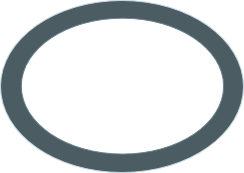






Home Safes
Home safes are a useful way to protect valuable goods and documents in the home.
In fact, some insurers may actually insist that you have one.
If your insurance company have asked that you use a safe, it is vitally important that the safe conforms to their guidelines.
Suitable safes for insurance purposes usually have a rating for the value of both cash and valuables, for example £1000 cash/ £10,000 valuables, or £2000 cash/ £20,000 valuables.
If you need a safe, but not necessarily for insurance reasons, then, your choice is greater.
Always try to get a good, sturdy model though.
Types Of Safe
Safes can be categorised by the type of lock mechanism that secures them. There are two main types, electronic and mechanical.
Electronic Safes
This type of locking mechanism is very popular. It is more convenient as you do not need a key to operate it, but it does have disadvantages too.
You may simply forget the combination, this happens quite often we find. Sometimes the battery will fail and you won’t be able to operate the keypad.
To overcome this, most manufacturers fit an override lock cylinder, (usually concealed behind a clip-on cover on the front of the safe). This lock cylinder will override the electronic keypad, and allow you to manually open the door.
It is for this reason alone, that we do not really like this type of safe. The lock cylinder is usually of very little security value, and can often be picked open easily.
Some have the more secure “radial lock” cylinders, with a tubular key. These are more secure, but only just.
Mechanical, Key-Operated Safes
We much prefer this type of safe, fitted with a key operated lever type lock, as the lock can only be opened with the correct key.
To gain access, a burglar would have to pick the lock, drill out the mechanism or cut into the safe itself. All time consuming activities.
Styles Of Safe
Now we have looked at the different mechanisms with which home safes operate, we move on to the different styles of safe that are available. Most versions are available with either key operated locks or digital keypad locks, depending on your preference.
Freestanding
This is the most common style of home safe and they are available in a variety of different sizes, to suit most needs/budgets. Although described as freestanding, this type of safe should always be secured in place with strong fixing bolts, either to a solid wall, or to floorboards/concrete floors.
At the other end of the spectrum are the much, much larger freestanding safes, more commonly used by businesses/institutions, but sometimes found in peoples homes.
This type usually will remain freestanding and unfixed, due to size and weight making removal extremely difficult. If at all possible though, taking steps to build this type of safe in, will only increase security.
Laptop Safes
These are simply a version of the standard freestanding home safe mentioned above. The only difference is the size/shape. They are wider but lower in height than standard freestanding safe types.
Of course, they are designed for the secure storage of laptop computers, but many people find that they are an ideal size to use as a general home safe. Again, they should be properly fixed.
Underfloor Safes
Designed to be fully concreted into a floor, this type of safe is obviously very secure.
The main disadvantage, however, is that the opening is usually very small, making it unsuitable for storing larger items. The small opening, and the underfloor position of this safe, make retrieving items more difficult as you have to reach down into the safe, often with very little in the way of vision as to what’s inside
Floorboard safes
These safes require that a section of floorboard be removed, in order to fit them in place.
Unlike underfloor safes, floorboard safes usually have much larger openings, although they too may be less convenient to “get-at”, if used frequently.
Wall Safes
Usually smaller types of safe. Wall safes require the removal of a number of bricks from the wall in order to fit them. This often makes home installation undesirable, especially as other types of safe may offer greater capacity.
Fire Safes
Some safes carry additional protection against fire, and are therefore rated as fire safes.
Typically, a fire safe may provide 1 hour protection against the effects of fire.
Finally
Before you commit to buying a safe, first decide on exactly what you want it for, what you intend to keep in it, where you intend to install it, and how you intend to install it.
Smaller safes are easier to conceal or hide, but remember, it is better to have too much capacity than not enough.
Your home safe really is the last line of defence if all of your other security measures fail and an intruder gains access to your property. Remember this, and choose carefully.
We are always available, should you require a home safe, and we can arrange to fit many of the types available.
Next Subject: You And Your Insurance Company.